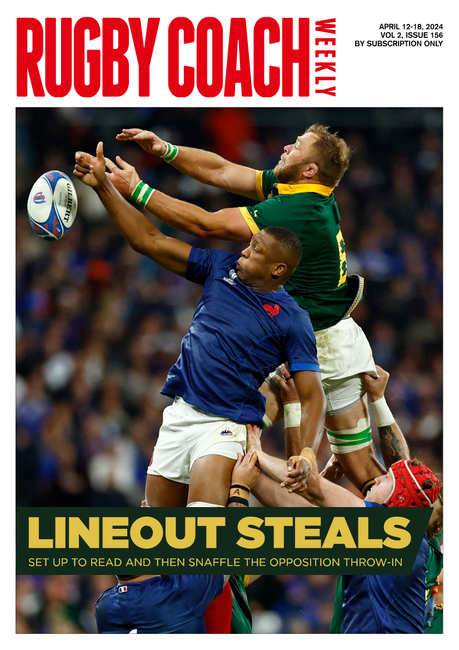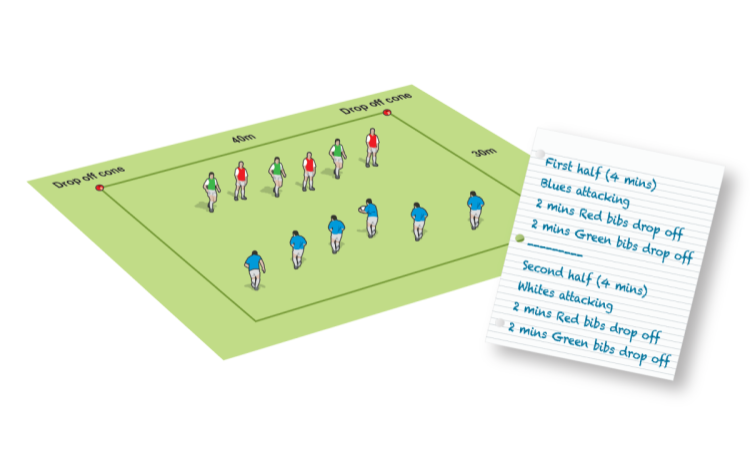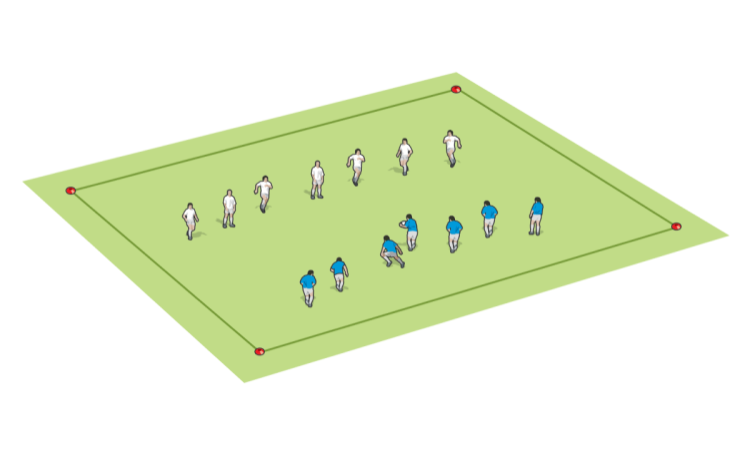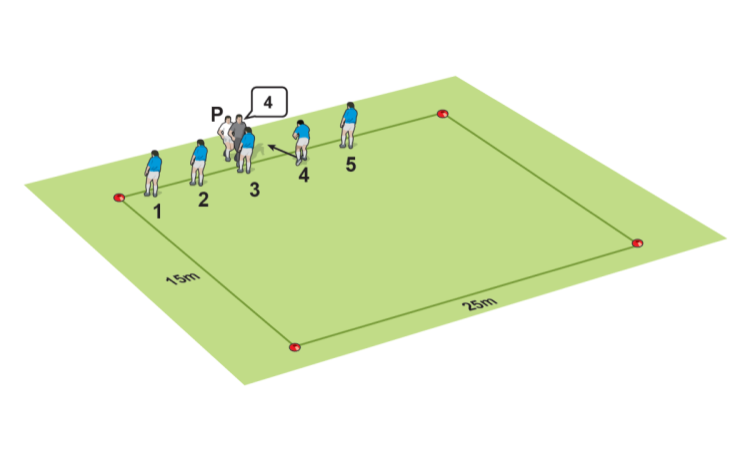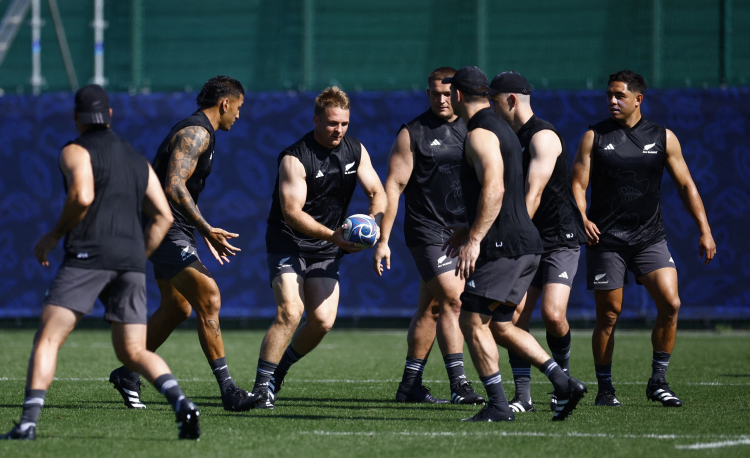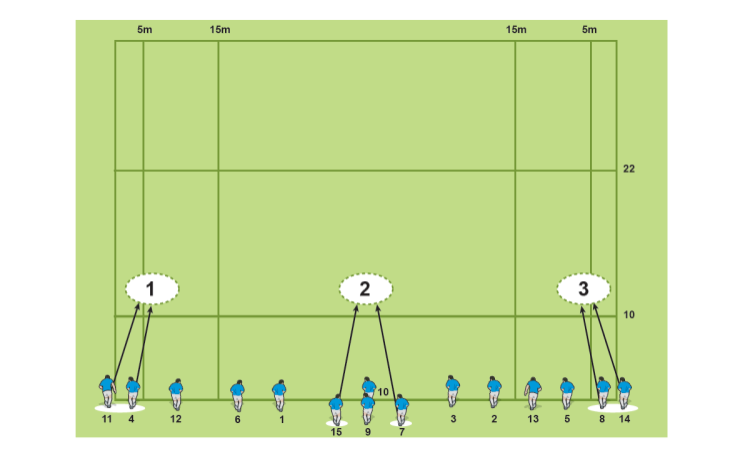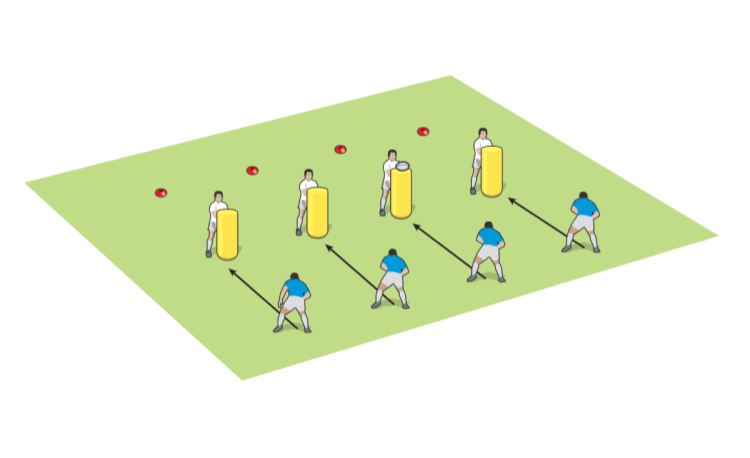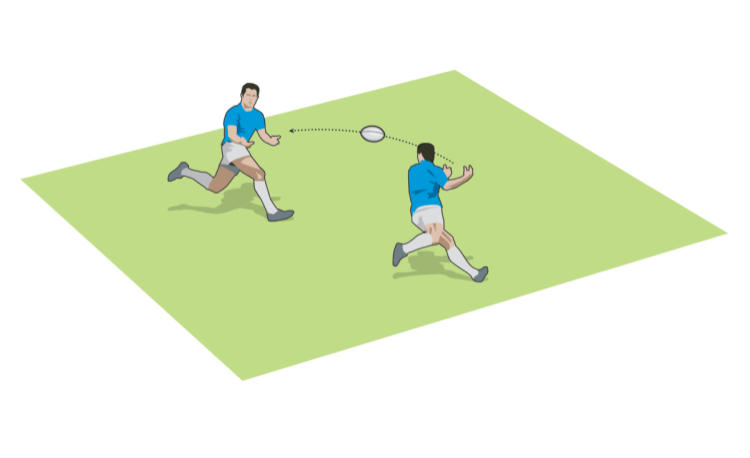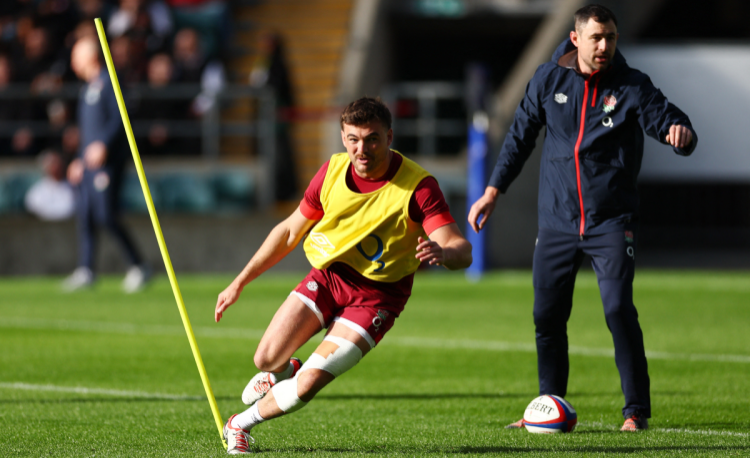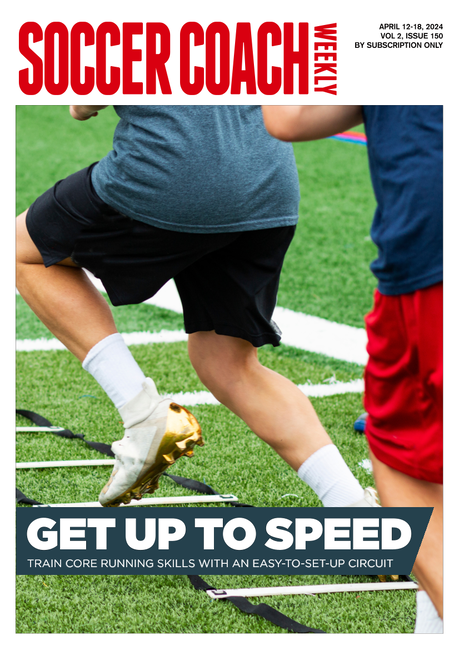You are viewing
1 of your 2 free articles
MINI RUGBY: Set the tone in the warm-up
Small-Sided Gamesby Dan Cottrell
We know what a challenge getting youngsters to listen can be. So how do you get them motivated and having fun? It starts with the warm-up, when you need to set the tempo for your session…
The attention span of mini-rugby players can be very short. So standing around will make them cold and distracted – and both will lead to kids switching off from your session.
Just because it’s a “warm-up” doesn’t mean you can’t incorporate some of the key skills within our game.
One skill that is often neglected is footwork, and how we use our feet to beat a defender. So work on the sidestep and swerve, along with just allowing the kids to run as fast as they can with the ball in their hands.

Ask for two volunteers to be a “shark”. They both have a ball and start in the middle of the box.
On your command, the “fish” try to make it to the other side of the box without being caught by a shark. The sharks catch them by touching them with a ball, which they must hold in two hands.
Once touched, the fish becomes a shark and takes the ball. The shark switches to become a fish – in other words, there are only ever two sharks. Get the fish to run across as many times as you wish. Add more sharks if you need to challenge the players more.
The game has two main messages – running with the ball in two hands and using evasive footwork skills.
As well as the “catch and pass”, running with the ball in two hands is another key skill for mini players that ought to become second nature.
Doing so keeps the opposition guessing and increases the options for the ball carrier.
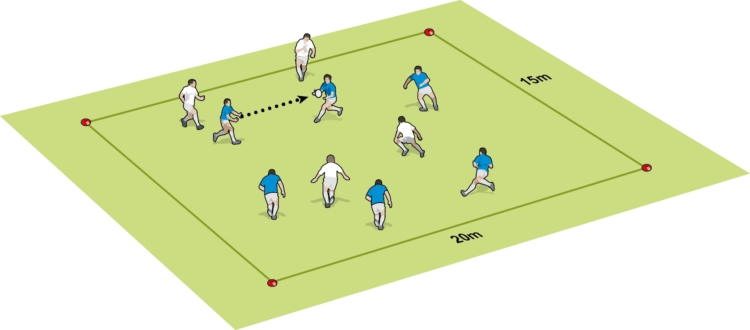
Play this in a 20m wide by 15m long box, with more attackers than defenders – say, 6 v 4.
The attackers aim to make five (or more) passes. The defenders attempt to stop them. They cannot rip the ball off them but instead must try to intercept.
Attackers cannot run with the ball – they have to pass and move in order to get another pass and this keeps the game flowing.
Both games outlined here will promote the “catch and pass” and footwork skills. If our mini players can get to grips with these core skills, we’ll start the process of creating functional players able to maximise their enjoyment of the game. Remember: every player wants to get the ball in their hands and to beat people.
KEEP THEM MOVING
The attention span of mini-rugby players can be very short. So standing around will make them cold and distracted – and both will lead to kids switching off from your session.
SNEAK IN THE FOOTWORK
Just because it’s a “warm-up” doesn’t mean you can’t incorporate some of the key skills within our game.
One skill that is often neglected is footwork, and how we use our feet to beat a defender. So work on the sidestep and swerve, along with just allowing the kids to run as fast as they can with the ball in their hands.
SHARKS AND FISH

- The sharks aim to touch the fish with the ball, while keeping it in both hands.
- On your whistle, the fish aim to reach the other side without being touched by a shark.
- If caught, a fish swaps with the shark, taking hold of the ball.
Ask for two volunteers to be a “shark”. They both have a ball and start in the middle of the box.
On your command, the “fish” try to make it to the other side of the box without being caught by a shark. The sharks catch them by touching them with a ball, which they must hold in two hands.
Once touched, the fish becomes a shark and takes the ball. The shark switches to become a fish – in other words, there are only ever two sharks. Get the fish to run across as many times as you wish. Add more sharks if you need to challenge the players more.
The game has two main messages – running with the ball in two hands and using evasive footwork skills.
TWO HANDS ON THE BALL
As well as the “catch and pass”, running with the ball in two hands is another key skill for mini players that ought to become second nature.
Doing so keeps the opposition guessing and increases the options for the ball carrier.
THE 5-PASS GAME

Play this in a 20m wide by 15m long box, with more attackers than defenders – say, 6 v 4.
The attackers aim to make five (or more) passes. The defenders attempt to stop them. They cannot rip the ball off them but instead must try to intercept.
Attackers cannot run with the ball – they have to pass and move in order to get another pass and this keeps the game flowing.
Both games outlined here will promote the “catch and pass” and footwork skills. If our mini players can get to grips with these core skills, we’ll start the process of creating functional players able to maximise their enjoyment of the game. Remember: every player wants to get the ball in their hands and to beat people.
Newsletter Sign Up
Coaches Testimonials

Gerald Kearney, Downtown Las Vegas Soccer Club

Paul Butler, Florida, USA

Rick Shields, Springboro, USA

Tony Green, Pierrefonds Titans, Quebec, Canada
Subscribe Today
Be a more effective, more successful rugby coach
In a recent survey 89% of subscribers said Rugby Coach Weekly makes them more confident, 91% said Rugby Coach Weekly makes them a more effective coach and 93% said Rugby Coach Weekly makes them more inspired.
Get Weekly Inspiration
All the latest techniques and approaches
Rugby Coach Weekly offers proven and easy to use rugby drills, coaching sessions, practice plans, small-sided games, warm-ups, training tips and advice.
We've been at the cutting edge of rugby coaching since we launched in 2005, creating resources for the grassroots youth coach, following best practice from around the world and insights from the professional game.


